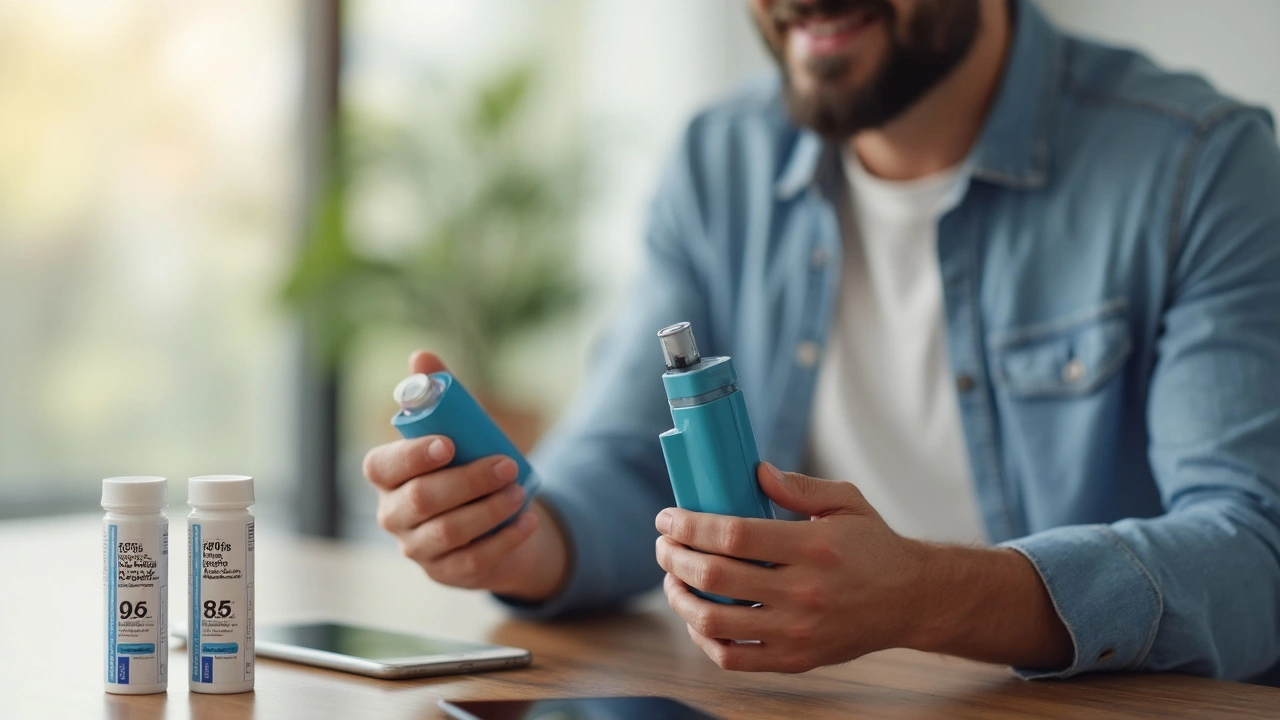Ipratropium Inhalers: How They Work, When to Use Them, and What to Expect
Struggling to catch your breath isn’t just uncomfortable—it can mess with every part of your day. If you have chronic obstructive pulmonary disease (COPD) or asthma, you might already know the relief that comes from a well-timed puff of the right inhaler. But what sets ipratropium apart from other inhalers on the pharmacy shelf?
Ipratropium is a go-to inhaler for many people dealing with COPD and sometimes asthma. Unlike typical rescue inhalers like albuterol (which work quickly to open up your airways), ipratropium works a little differently. It’s called an “anticholinergic bronchodilator,” which just means it helps to relax and open up the airways by blocking certain nerve signals that cause muscles around the airways to tighten up.
People often use ipratropium when they’re not getting enough relief from other inhalers or when side effects from typical rescue inhalers become a problem. While ipratropium isn’t usually the first inhaler you get after a diagnosis, it can make a real difference if you have persistent symptoms or need extra help controlling flare-ups during cold weather, exposure to smoke, or after physical activity.
One thing to know: ipratropium works best if you use it regularly, not just when you feel breathless. It’s not as quick as albuterol for emergency relief, but it’s really helpful for day-to-day management and keeping flare-ups in check. Some people use it together with a short-acting inhaler to cover their bases both long-term and in the moment.
Wondering about side effects? Most folks tolerate ipratropium pretty well, but some get a dry mouth, cough, or a strange taste in their mouth. It’s smart to rinse your mouth after a puff and use good oral hygiene to minimize issues. If you have glaucoma or trouble urinating, ask your doctor before starting ipratropium, since it can make those conditions worse.
How do you use it for best results? Make sure you breathe out before you use the inhaler, seat the mouthpiece firmly, push the canister while you breathe in slowly, and hold your breath for a few seconds for deeper medication reach. If you have dexterity problems, ask your pharmacy about a spacer device to make things easier.
Ipratropium doesn’t replace your rescue inhaler, so keep your usual quick-relief inhaler handy for sudden symptoms. But if you’re tired of feeling out of breath even after regular treatments, it’s worth asking your doctor about adding or switching to ipratropium. It’s often included in lists of trusted inhaler alternatives, especially for stubborn symptoms or older adults with both asthma and COPD features.
Curious about cost or availability? Generic options keep prices reasonable, and it’s covered by most insurance and healthcare plans. Many Canadian pharmacies even offer home delivery, which is a plus if mobility or local stock is an issue.
Want to get the most out of your ipratropium inhaler? Track your symptoms, stick to your dosing schedule, and talk to your care team if anything feels off. A little attention goes a long way in managing breathing problems—sometimes all it takes is the right inhaler and a few smart habits to make each day more comfortable.
Top Alternatives to Albuterol: 2025 Guide to Rescue Inhalers and Emerging MDI Options
by Prudence Bateson May 21 2025 19 Respiratory HealthA deep dive into modern alternatives to albuterol for asthma and COPD in 2025. Covers how levalbuterol, ipratropium, and powerful combination inhalers stack up for rapid symptom relief. Provides up-to-date research, real user tips, stats, and practical advice for anyone considering a switch in rescue inhalers. Highlights new inhaler technologies and prescribing trends you might not have heard about yet. Includes a helpful link to a leading guide on albuterol alternatives.
READ MORE
